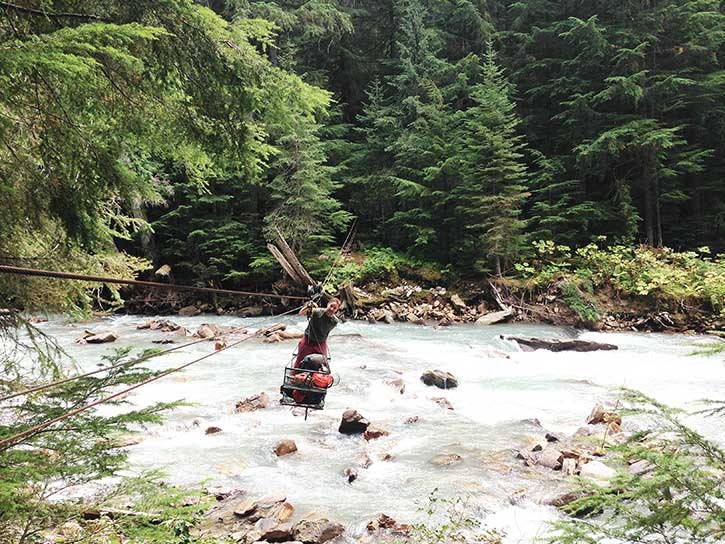 An Upper Columbia Valley backpacking trail, which is one of the Kootenay region’s premiere — as well as one of its least used — routes, got a much-needed touch up late this summer and is set to be in prime shape next hiking season.
An Upper Columbia Valley backpacking trail, which is one of the Kootenay region’s premiere — as well as one of its least used — routes, got a much-needed touch up late this summer and is set to be in prime shape next hiking season.
The Earl Grey Trail extends some 60 kilometres (some sources say 61, some say 63, others 64) from the upper reaches of Toby Creek down to Argenta, on the shore of Kootenay Lake, a four- to five-day hike through some truly remote and wild backcountry. The rugged natural state of the trail and relatively few number of hikers it attracts means it is usually in rough condition and is not-well defined in many spots, with thick vegetation, rock slide debris and plenty of big blowdown (fallen trees), making it difficult going even for the hardiest of hikers. At least five creek crossings need to be made by hand-pulled, suspended cable cars. However, every several years or so, BC Parks tries to clear things up as best as possible, and this summer a crew of four BC Parks rangers did just that.
“It’s probably as good as it ever gets right now. It’s a pretty advanced trail and it’s a steep, narrow valley so it gets impacted a lot by (rock and debris) slides,” said BC Parks ranger Ryan van der Marel, one of the four doing the trail work. “It’s certainly intense to do it (the hike) all in one go, east to west. Really, it’s for experienced hikers prepared to do some of their own route finding, but it is absolutely spectacular.”
Van der Marel and and fellow ranger Jim Grey teamed up with rangers Dave Gottdenker and Robbie McClary and spent four days in early August clearing the western portion of the trail, up to the Earl Grey Pass, the trail’s high point. Then, a few weeks later, van der Marel and Grey spent three days on their own working on the eastern portion of the trail.
“It was really tough,” said van der Marel, adding the rangers were hefting 70 to 80 pound (31 kilogram to 36 kilogram) packs and clambering up steep climbs, all while carrying chainsaws. In places, the trees across the trail were so large that they were impossible to cut through, so the rangers would instead cut footholds and notches in them to help future hikers get over.
The route has a heritage aspect, being a former First Nations trade route and having the cabin of former Governor General Earl Grey on the trail. The cabin was built by the Earl in 1909 and his whole family used it as a holiday retreat that summer. The remains of the cabin are still standing, not far from the start of the eastern trailhead.
“(The cabin) is falling into disrepair, which is unfortunate because its a pretty cool structure, but it’s definitely still there,” said van der Marel.
There are natural splendours aplenty on the trail as well, with views of the Toby Glacier and Lady MacBeth Glacier from Earl Grey Pass, which van der Marel calls “a stunning spot,” and huge old growth trees on the western side of the trail.
“They are the kind of trees you don’t see often in the (B.C.) interior. It’s more what you’d expect to find on the coast,” said van der Marel.
The trail gets maintained every few years despite a lack of many hikers, principally because of its historical significance, said van der Marel, adding that although it’s a great route, cleaning it up a greater degree might prove fruitless, given its remoteness.
“To make it less rugged would cost quite a lot of money and you don’t have any assurances that you wouldn’t have to be in there every single year, maybe even more often, to keep clearing up the latest blowdown or the latest slide debris,” he said. “It really would be a lot of work.”
Clearing the trail to a greater degree, according to van der Marel, would also impact the remote, wild feeling of the trail.
